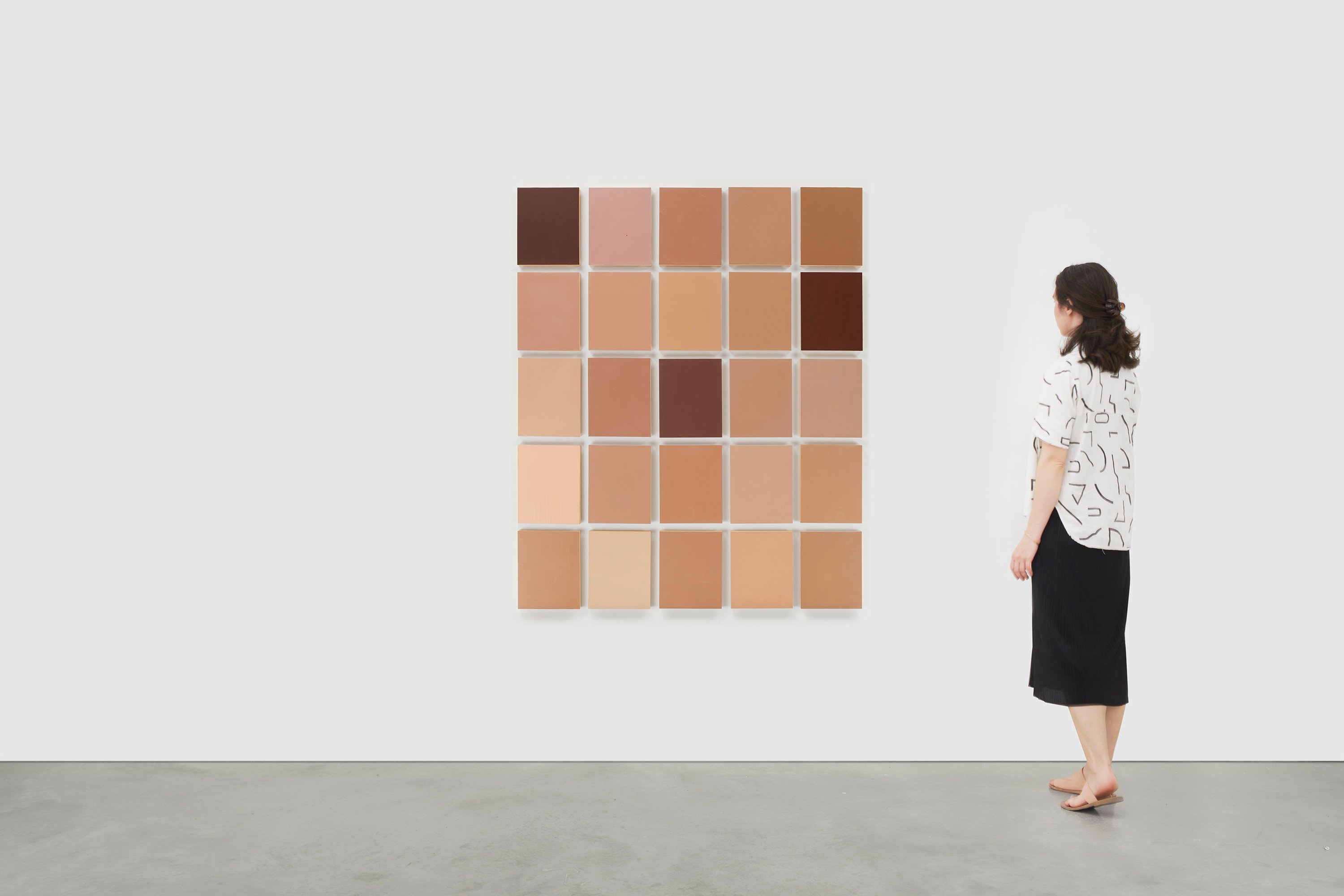
In these turbulent times, creativity and empathy are more necessary than ever to bridge divides and find solutions. Artnet News’s Art and Empathy Project is an ongoing investigation into how the art world can help enhance emotional intelligence, drawing insights and inspiration from creatives, thought leaders, and great works of art.
Born in America with Korean heritage, Byron Kim is an artist whose work has long explored racial identity and the implications of minority status in a country founded on the ideal of equality.
First exhibited in the 1993 Whitney Biennial, Synecdoche (1991–) presents 400 individual monochrome portraits of individuals’ skin colors. At once an abstract wonder, the piece takes on an entirely new meaning considering its political subtext. Though Kim initially sought to create a Modernist kind of portraiture, he recognized quickly that the work would take on a life of its own.
We worked with Karleen Gardner, the director of the Minneapolis Institute of Art’s Center for Empathy and the Visual Arts, to get a deeper sense of the work’s meaning, history, and its connection to emotional intelligence.
Byron Kim, Synecdoche (detail, 1991–). Photo: Phoebe d’Heurle.
Breaking Down Hierarchies
The ongoing exploration Kim began in Synecdoche has been 30 years in the making. And its continued—and perhaps enhanced—relevance in today’s world is striking.
The specific way in which Kim constructs the presentation of his piece levels the playing field: the work is composed of a grid of small monochrome panel paintings, and each grid represents the skin color of a specific individual that has sat for Kim.
Breaking down any hierarchy is Kim’s arrangement. The panels are arranged in alphabetical order by each sitters’ surname, together creating a group portrait void of any pecking order. The work’s title also refers to a figure of speech in which a part stands for a larger whole, aptly capturing Kim’s aim.
Byron Kim, Synecdoche (1991–). Photo: Phoebe d’Heurle.
A Multiplicity of Backgrounds
By portraying each individual exclusively by the color of their skin, Kim suggests a new way of connecting his sitters with his audience. While from a distance, the work appears purely abstract, upon closer inspection, you are able to imagine not only yourself within the work, but also to visualize a range of others.
Synecdoche begs the question of what skin color represents for each individual and pushes the viewer to consider who they are beyond the color of their skin. Kim has himself undergone a distinct experience of feeling “other” in the country he calls home. Knowing firsthand the psychological and emotional effects of that experience, Kim seeks to push past the attention given to his physical attributes, and suggests our shared commonality within difference.
Byron Kim, Synecdoche (detail, 1991–). Photo: Phoebe d’Heurle.
Art-Making as Empathy
To achieve a color identical to the skin of each sitter, Kim adheres to a specific and intimate process. Only after closely examining a portion of the subject’s skin, and sitting with them for an extended period of time, does Kim begin to blend various paints together to land on the perfect shade.
Friends, family members, and strangers alike have sat for the artist, making the piece as personal as it is universal. What Kim ultimately achieves is a new kind of portraiture that speaks to the complexity of being an individual in a complex and ever-changing world.